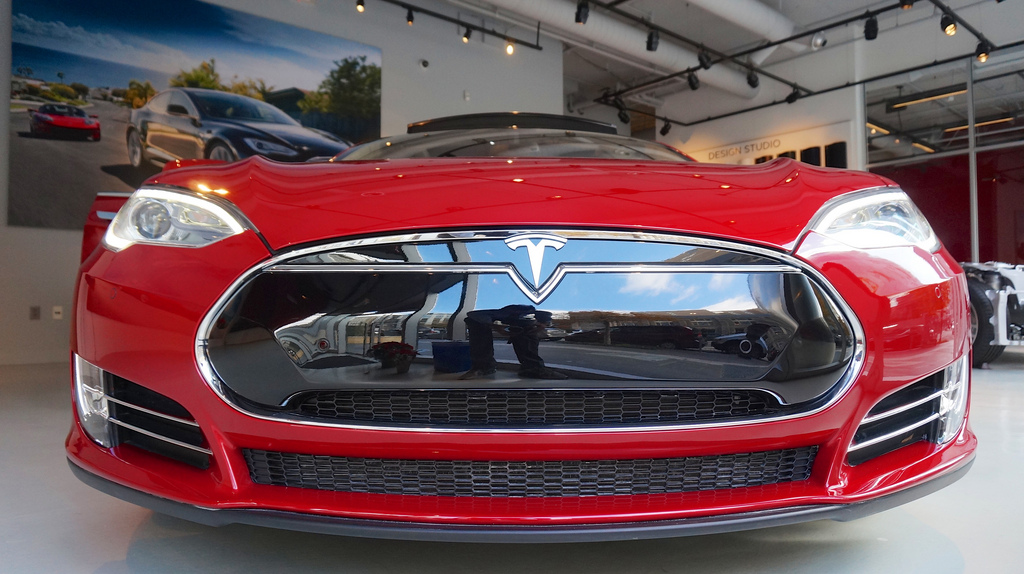Elon Musk has a lot going on these days. The start of mass production of Tesla’s low-cost Model 3 electric vehicle (EV) has experienced major hiccups, resulting only 222 rolling off the production lines during Q3. Additionally, Tesla is busy supplying hospitals in Puerto Rico with power, building what is perhaps the world’s largest battery system in Australia, and preparing to roll out an electric semi later this month.
What appears to not be a priority for Tesla is growing or even maintaining its market share in the distributed solar space. The company deployed only 109 MW of PV systems during Q3 2017, its lowest level in many years.
In its quarterly letter to investors Tesla excused this decline by noting that it was pulling away from lower-margin commercial and industrial solar deals. However such a low level indicates a fall in residential solar deployment as well and can also be seen in light of the contraction of the national residential solar market beginning in late 2016.
Both Tesla/SolarCity and Vivint pulled back from ambitious growth paths last year, which was followed by a decline in the overall residential solar market, with more business going to the “long tail” of local installers. Of the big three residential solar companies only Sunrun continues to grow, and while the company has not released quarterly results for Q3, it is now in competition with Tesla to be the largest residential solar provider.
Tesla’s approach to sales may be a major factor, and the company has moved away from the door-to-door model previously popular with SolarCity and other large installers. And while Tesla says that increasing numbers of its EV customers buying PV and battery storage systems in its stores “validates its strategy”, this must be seen in the context of dramatically reduced sales volumes.
Tesla is also continuing the shift from third-party solar to direct sales, in line with national trends. The company estimates that direct purchases represented 46% of its sales during the quarter, and forecasts that this will represent more than 50% of its solar business next quarter.
Tesla gave scant information on the progress of its Solar Roof, which Elon Musk characterizes as going through the validation process. To date the Solar Roof has only been deployed on a pilot basis, mainly on the homes of Tesla executives.
And while it has more to do with the company’s automotive business, Tesla’s financial metrics were likewise not promising. The company reported a -26% operating margin and a net loss of $671 million against just under $3 billion in revenues. And while Tesla remains well funded, the company burned through $301 million in cash during the quarter.
Energy storage on the rise
But as Tesla’s solar business flounders, its energy storage business is on the rise. During the quarter the company deployed 110 megawatt-hours (MWh) of batteries and has installed the first 80% of the world’s largest battery system, a 100 MW plant in South Australia. Tesla says that it is “on track” to meet a 100-day deadline for hte project.
Tesla also states that it has deployed “hundreds” of battery systems to Puerto Rico, and announced restoration of power at a hospital through rapid deployment of a PV and battery storage system.
In terms of manufacturing, Tesla reports that battery cell production at its Gigafactory 1 in Reno is continuing to ramp, and that the solar Gigafactory 2 is on track to begin production of the Solar Roof “at the end of this year”.
Hopefully there will not be the sorts of manufacturing delays that have plagued the Tesla Model 3. However, in the company’s results call Elon Musk stressed how far his company has come, recently producing its 250,000th EV as opposed to only 2,500 five years ago.
“So consider your assumptions for the future and whether they’re valid or perhaps pessimistic,” quipped Musk.
This content is protected by copyright and may not be reused. If you want to cooperate with us and would like to reuse some of our content, please contact: editors@pv-magazine.com.



Tesla is awesome they have made battery storage a much wanted option for solar homes. Even utilities are buying it by the Megawatt.